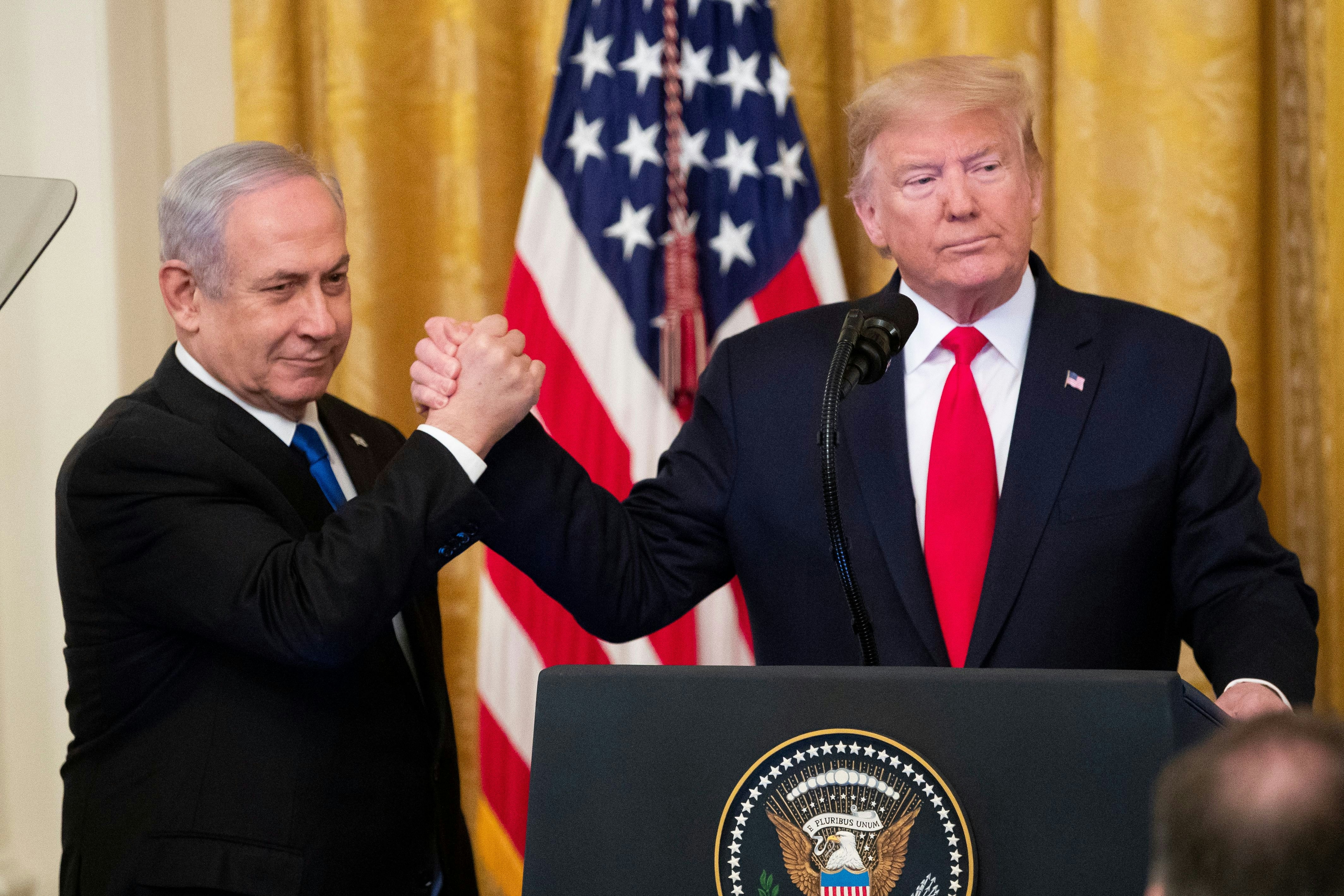
On Tuesday, President Trump announced his long-awaited Middle East peace plan. The plan calls for new expanded borders for Israel, and for the country to acquire control of the Jordan Valley, a territory on the eastern side of the Palestinian West Bank where Israel has been building contested settlements. The plan would also give Israel control over other areas throughout the West Bank. The result would be a Palestine consisting of an archipelago of small areas linked by roads, described by one journalist on Twitter as having a “Swiss cheese-like” effect. This would, of course, make actually living there incredibly difficult and confusing.
In exchange, the plan would establish a path to Palestinian statehood, dependent on a series of conditions that the territory would have to meet, including denouncing violence and negotiating with Israel. Palestine would also still be held under Israel's thumb, subject to "overarching Israeli security control in some areas" and denied its own army, per The Guardian. Trump was joined by Benjamin Netanyahu, Israel’s embattled prime minister, to announce the plan.
Notably absent in the unveiling, of course, were any Palestinian officials, whom The New York Times reports “no longer speak to Trump officials.” The lack of Palestinian participation has hobbled the creation of the plan, which was first announced to be in development three years ago.
“I was not elected to do small things or shy away from big problems,” Trump said at a White House press conference. “It’s been a long and very arduous process to arrive at this moment,” he added.
Still, the notion that this plan will actually serve as a roadmap to peace is far-fetched. The idea is that the plan would be used in negotiations if both Israeli and Palestinian officials agree, but the latter rejected it before it was even released. “We are asking the Palestinians to meet the challenge of peaceful coexistence,” Trump said. Mahmoud Abbas, leader of the Palestinian Liberation Organization, is expected to call a special session later Tuesday where he will ask for other leaders in the Arab world to denounce the plan.
It’s also telling that Trump chose this moment to finally release the plan, given Israel’s tangled electoral politics. Trump decided to go public before the March 2 general election between Netanyahu and his rival, Benny Gantz. According to The Washington Post, Trump withheld the plan through the two inconclusive elections that Netanyahu and Gantz have faced off in over the past year, hoping to release it once a clear result had been determined. By releasing it now, the White House hopes that it can help prompt a final answer as to who Israel’s leader will be.
“They’re two good competitors. They’re fighting it out,” Trump said at the press conference Tuesday. “I’ve been waiting now — this is my third election. We keep waiting, and waiting, and waiting. So, let’s go. What kind of a system is that?”
Still, even if the plan does help jar loose a lasting answer as to who should lead Israel, its chances of bringing Palestinians to the table while turning their territory into an archipelago of occupation seems far less likely. Instead, the plan seems likely to give a Trumpian stamp of approval to what the Israeli right-wing has long clamored for: continued annexation of the West Bank, with or without the consent of its inhabitants.







